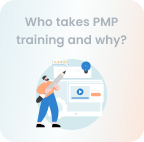







 10 Sep 2024
10 Sep 2024



What turns a promising idea into a product that people actually want? Product Planning is where it all begins, blending clear goals, smart roadmaps, and customer insight into one strategic process. It sets the direction early, keeps teams aligned throughout, and reduces costly mistakes down the line. By turning scattered ideas into structured plans, it helps businesses move from concept to market with confidence.
This complete blog walks you through everything you need to know, from identifying market needs and prioritizing features to managing the product lifecycle. Whether you're building something new or improving an existing offer, effective Product Planning ensures every decision leads to real value.
Table of Contents
1) Understanding Product Planning
2) Key Goals of Product Planning
3) Stages in the Product Planning Process
4) Benefits of Product Planning
5) The Product Planning Workflow
6) Conducting Market Analysis
7) Conclusion
Product Planning is the strategic process of identifying, developing, and bringing a product to market. It encompasses everything from the initial idea to the final stage when a product is retired. This planning ensures a product is not only desirable for customers but also feasible for the company to build and support.
The process is dynamic and ongoing and it adapts to market trends, customer needs, and competitive movements. Done well, it aligns the business’s long-term goals with tangible action points across departments, from R&D to marketing and customer service. Product Planning is not just about launching new products; it also helps refine existing ones, ensuring continuous innovation and relevance.
Product Planning serves several core objectives that shape how products are conceived, developed, and sustained in the market. These include:
1) Meeting Customer Needs: Successful products address real challenges faced by real people. A deep understanding of the target audience ensures that offerings remain relevant and valuable.
2) Aligning with Business Strategy: Every product should support broader business objectives, whether it's market expansion, revenue growth, or brand strengthening.
3) Enhancing Cross-functional Collaboration: A well-defined product vision unites teams across departments, from marketing and engineering to finance and sales, ensuring cohesive execution.
4) Minimizing Risks and Uncertainty: Strategic planning enables businesses to anticipate obstacles, mitigate risks early, and adapt efficiently, preventing major disruptions.
5) ROI: Every product requires investment. A thoughtful planning process ensures that resources are allocated effectively, maximizing returns.
Without a clear strategy, businesses risk misallocating efforts, developing features that lack impact, missing the right audience, or launching at an inopportune time. Proper planning lays the foundation for a product’s success, turning potential into tangible results.
Align teams with a clear Product Planning process with our CAPM Course - Register now!
Product Planning unfolds through a structured set of stages that guide a product from concept to eventual retirement. The stages in the Product Planning process are:

This is where everything begins. Brainstorming sessions, market gaps, and emerging trends often feed the idea funnel. At this stage, the focus is on defining what the product is, what problem it solves, and who it's for.
Product concepts are evaluated based on feasibility, market demand, and alignment with business goals. This step is foundational; if the concept is weak, everything else may crumble. Stakeholder involvement at this stage is crucial. Bringing in voices from different departments ensures that diverse perspectives shape the concept early on.
Understanding what already exists in the market is critical. Who are the competitors? What are their strengths and weaknesses? What gaps are they leaving behind? Competitive analysis helps refine the product concept, identify differentiators, and anticipate challenges.
It can also inform pricing, features, and positioning strategies. Modern tools like SWOT analysis, Porter’s Five Forces, and customer reviews help paint a clearer picture of the competitive environment.
Now it’s time to go beyond assumptions. Market research, both qualitative and quantitative, validates demand. Surveys, interviews, and focus groups can uncover customer pain points, willingness to pay, and expectations.
This step gives insights into potential user personas, market size, and trends, helping businesses shape a product that people actually want. Proper segmentation during this stage ensures the product meets specific needs rather than trying to appeal to everyone. This increases its chances of success.
Rather than building the full-featured version, an MVP includes just enough functionality to test core assumptions. It’s a learning tool, a way to collect feedback and validate demand quickly and affordably.
MVPs are particularly useful in reducing time to market and avoiding overinvestment in ideas that may not resonate. Companies like Dropbox and Airbnb famously launched as MVPs, gathering valuable user feedback before expanding.
After iterating and refining based on MVP feedback, the product is ready to launch. This phase includes go-to-market strategies, pricing models, marketing campaigns, and distribution plans. A successful launch depends on timing, clarity of messaging, and having the right support systems in place, such as customer service and technical support.
Launch plans should also include post-launch monitoring strategies to quickly identify and address any issues users experience.
Once launched, the product enters an ongoing phase of monitoring and improvement. Customer feedback, market shifts, and performance metrics updates, enhancements, and sometimes repositioning.
The product team continues to evaluate KPIs and ensures the product remains competitive and aligned with user expectations. Lifecycle management also involves planning for scalability and future iterations, ensuring the product grows with the user base.
Eventually, every product reaches a point where it’s no longer viable. It may become outdated, replaced, or simply unprofitable. Sunsetting is the planned phase-out of a product from the market.
This involves notifying users, ending support, and potentially migrating customers to newer solutions. It’s just as strategic as the launch, and if handled poorly, it can hurt the brand. Clear communication and transitional support during sunsetting protect user trust and maintain brand loyalty even as a product exits.
Why do you invest so much effort in Product Planning? Because the returns are well worth it. The following are the benefits of Product Planning:

When planning is based on real customer insight, products are more likely to succeed. Teams can tailor features and functionality to meet user expectations, increasing satisfaction and loyalty.
Product Planning prevents wasted time and money. It ensures teams are working on the right things at the right time. Budgets, people, and tools are used efficiently to achieve clear objectives.
For physical products, planning helps ensure the right quantities are produced and stored. This reduces overstocking, minimizes waste, and ensures smooth supply chain operations. With proper forecasting and coordination, inventory matches demand, reducing costs and improving delivery performance.
Accurate planning supports realistic forecasting. Sales teams can better predict demand, and manufacturing can plan accordingly. This leads to fewer stockouts or overages, creating a smoother experience for customers and stakeholders.
Build real-world agile skills and become Certified with our PMI-ACP Training - Register now!
To put planning into action, businesses follow a repeatable workflow. This guides teams from research through to roadmap execution.

Before any product decisions are made, the external landscape must be studied. Market analysis examines trends, customer behavior, economic factors, and potential growth areas. This step provides a reality check. It helps validate whether a product is worth pursuing and reveals strategic opportunities. Tools like PESTEL analysis, market segmentation, and competitor benchmarking are commonly used at this stage.
Product ideas are exciting, but they must make financial sense. At this stage, teams review cost estimates, potential revenues, pricing strategies, and profit margins. Financial planning sets the boundaries for what’s feasible and helps prioritize projects based on ROI. Even the most innovative product can fail without a sound financial foundation. This step aligns creativity with sustainability.
Every product must support the larger business vision. Is the company aiming for innovation, expansion, or efficiency? Corporate strategy influences the kinds of products developed. It ensures alignment across the portfolio and prevents misdirection. This alignment fosters a cohesive brand identity and prevents internal conflict about priorities or direction.
A product strategy defines the target market, value proposition, and positioning. It sets goals such as market share, customer acquisition, or feature adoption. This is the blueprint that guides all future product decisions, from feature design to marketing tone. A strong product strategy also includes KPIs that help measure progress.
Finally, ideas are translated into timelines. The roadmap outlines what will be built, when, and by whom. It aligns all stakeholders and creates transparency across the organization. The release plan maps out phases of development, testing, and launch, helping ensure a coordinated, successful rollout. A good roadmap remains flexible, allowing teams to pivot based on feedback without losing sight of the final goal.
Product Planning is not just a one-time task; it’s an ongoing process that drives product success across its entire lifecycle. From shaping the initial idea to managing its sunset, each step matters. Clear goals, careful research, and strong cross-functional collaboration all contribute to a well-executed plan. Whether you’re developing your first product or managing a full portfolio, mastering this process can lead to better decisions, happier customers, and greater returns.
Master every stage of Product Planning. Sign up now for PMP Training!






© Copyright 2025. All rights reserved. Contact: PMP® TRAINING ACADEMY.


